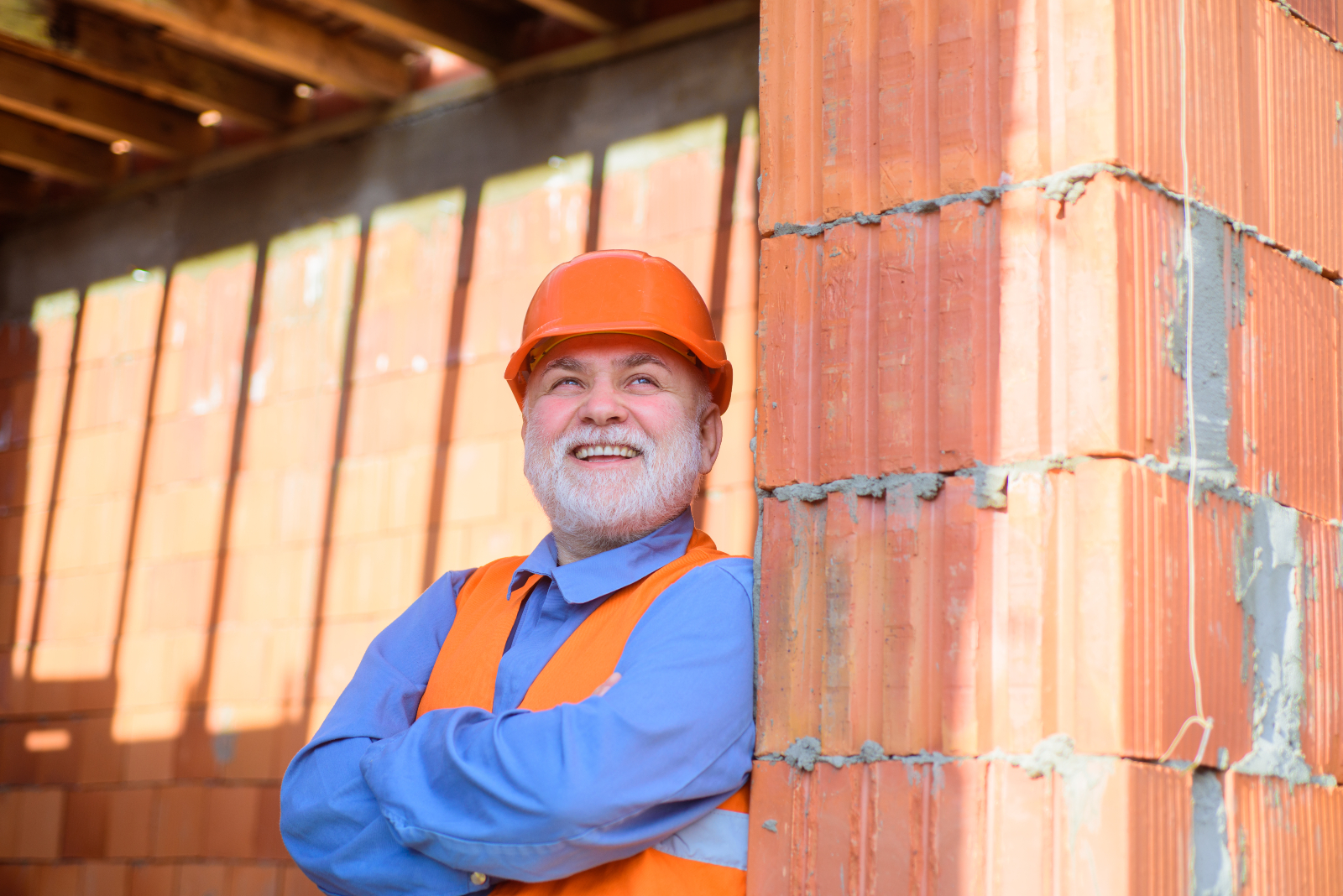
Whilst modern techniques, tools and innovations have brought some changes to the way on-site construction workers perform their duties, they still generally have to carry out physically demanding tasks in sometimes harsh conditions.
Day after day, year after year, you might think that surely such labour takes its toll, so how is it the case that, even as the workforce ages, a great many construction workers remain physically able to handle the strain? The answer it appears is because they have ‘physical wisdom’. Find out what this means in this week’s blog.
What is physical wisdom?
A few years ago, researchers at the University of Waterloo in Canada, conducted a study of construction workers, initially fitting bricklayers with motion sensor suits while they went about building a wall of concrete blocks. The researchers did this with bricklayers of varying skill levels/ ages and used artificial intelligence (AI) techniques to analyse the impact of such physical work on their bodies.
In a follow-up study, sensors were used again to record the movements of master masons with the AI programs identifying common patterns for body positions.
The results showed clearly that the more skilled bricklayers were using previously unidentified techniques to limit loads on their joints and master masons did not exactly stick to the standard rules around comfortable and safe working practices that are taught to novices.
Instead, they had developed their own ways of working safely but also quickly and efficiently. One example cited in the study is that they would more often be seen ‘swinging’ blocks rather than lifting them and therefore were bending their backs less.
The data showed that expert workers put less stress on their bodies, but were able to do much more work. Calling this a ‘physical wisdom’, the research essentially answers that question of how construction workers can continue to work effectively, even into their old age.
Carl Haas, a professor at the University of Waterloo, who led the research with his colleague, Eihab Abdel-Rahman, said:
“It’s fascinating that for about 100 years we have been studying how masons do their work and how to make work more efficient and safe, but only now do we have the tools to dive in and figure out how some can keep working safely and productively when they are 65. It’s as if skilled trades learn or acquire a kind of physical wisdom that they can’t even articulate.
“I believe the techniques are learned, or discovered by workers over time. It’s very different from the classic taught ergonomic techniques which are safe if you try to follow them, but make you slow and unproductive if you want to work dynamically. This is like a highly developed skill, akin to those of professional sports players.”
Having physical wisdom is clearly an advantage that comes to construction workers with age, skill and experience. Going forwards, it is hoped that insights from this study can be used in the way apprentices receive their training, helping to reduce the chances of wear-and-tear injuries and boost productivity.
Have you changed the way you work as you’ve progressed a career in construction? Do you even notice the small changes in your movements? Let us know if you’ve got any thoughts on this by commenting over on our Facebook or LinkedIn pages.
03.04.2023
Feature image: Freepik








